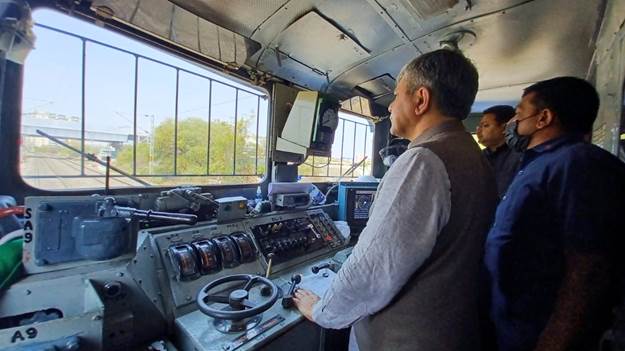India–US Trade Tensions Rise Over Steel and Auto Tariffs NMDC Limited reports a 38% drop in Q4 FY24 consolidated net profit RINL to Raise $23 Million Through Land Sales Amid Crisis

The indigenous train collision avoidance system, Kavach, has been implemented by Indian Railways on 1,465 route km, mostly in the South Central Railway division. In May or June, the Railways plan to release a call for bids to upgrade its current and future installations to LTE (long-term evolution) technology, which will enable and facilitate the transition to 4G or 5G across the board.
The formal introduction of Kavach could happen in at least another 12 to 15 months, if not later, sources told a media source.
Current tenders would cover 6,000 km, including 3,000 route km (Rkm) along the Delhi – Mumbai and Delhi – Howrah routes (covering 3,000 km), where surveys are currently underway, officials said.
The North Western Railway (NWR) – covering States like Rajasthan, Gujarat, Punjab, and Haryana – has reportedly awarded tenders worth ₹426 crores for the train protection system to be rolled out on 1,600 km across the zone. The targeted completion is in 2025.
Earlier this month, successful trial runs for Kavach were carried out on Vande Bharat trains (running at 160 km/hr) along the test track located between Mathura and Palwal. Trials were carried out with an eight-car Vande Bharat train and in the next phase, it would be carried out in a 16-car Vande Bharat.
In case of the South Central Railway zone (where 1,465 km of Kavach is already deployed) – which predominantly serves Andhra Pradesh, Telangana, Maharashtra, and portions of Karnataka, Tamil Nadu, and Madhya Pradesh – there would be an upgrade of infrastructure.
“Apart from a collision avoidance system, there are many other components such as station Kavach, RFID tags throughout the track length, and the installation of Kavach towers along tracks, which need to be in sync at the same time,” an official said, adding that Railways is in the process of installing these components and getting their safety certified.
Capacity ramp up
Earlier this month, the Cabinet approved reserving an additional 5MHz spectrum in the 700 MHz band for the Railways for the national rollout of Kavach, over the earlier assigned 5 MHz for the automatic train protection system.
Right now, the Railways have an annual capacity to install 1,500 Rkm of Kavach, which will subsequently be taken up to 2,500 Rkm in FY25 and then to 5,000 Rkm in FY26 as approvals for new vendors come in.
At least two new vendors are awaiting approvals, sources said. Existing vendors for the tech include Medha, Kernex, and HBL PowerSystems.
The cost for the provision of trackside, including station equipment of Kavach, is approximately ₹50 lakh per km and the cost for the provision of Kavach equipment on a loco is ₹70 lakh per loco. The budgetary allocation for Kavach, in FY24 was ₹710 crore and in the FY25 Interim Budget, it is nearly ₹560 crore.
Installation of other components
According to a senior Railway official, optical fibre cable (OFC) laying has occurred across 3,040 km of the proposed 6,000 km, while 269 towers have been installed.
Some 186 Station Kavach installations (data centre-type installations at rail stations) have happened.
Trackside equipment has been installed in 827 Rkms, and 170 loco equipment has been set up.
“In all there are 139 locomotives including electric multiple unit rakes that are Kavach enabled,” the official said.
Also Read : AMNS India gains control of 16 MMTPA iron ore handling terminal at Vishakhapatnam port Welspun One to invest Rs 2,000 crore in TN to develop industrial and logistics parks